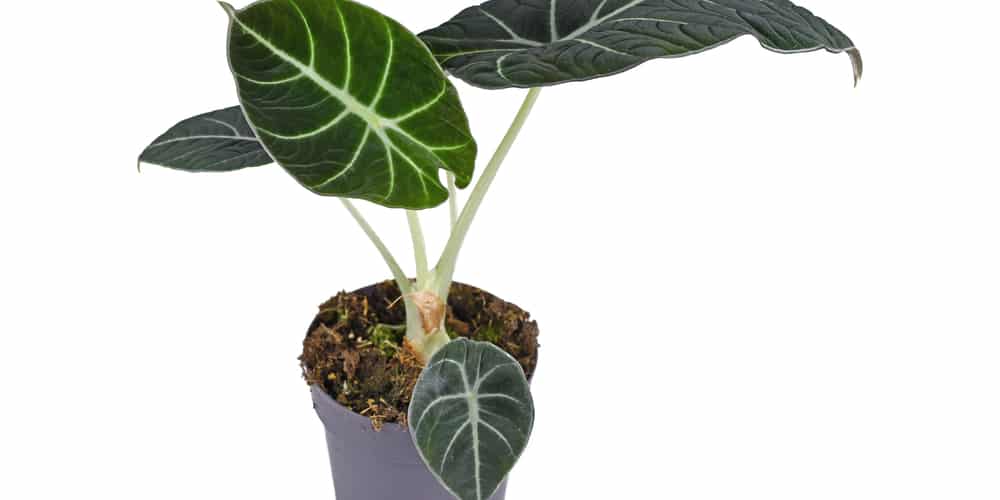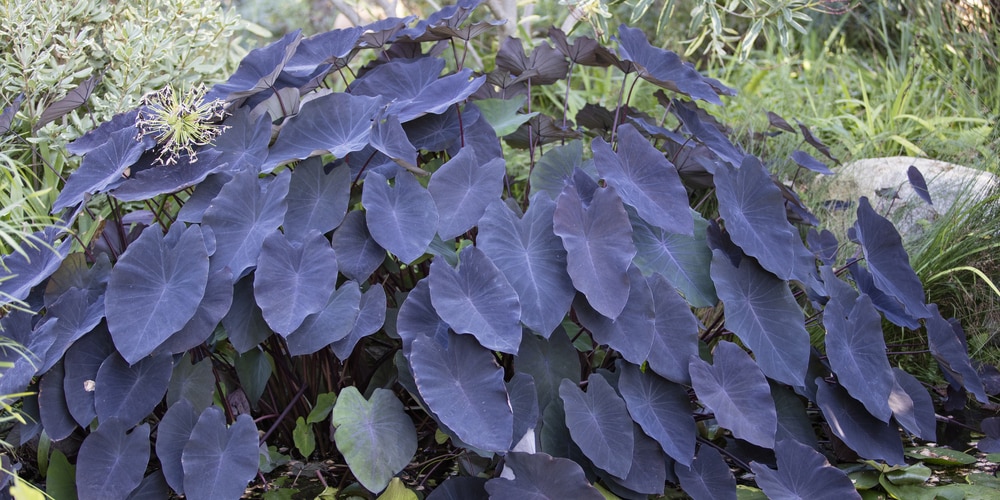How do you tell the difference between colocasia and alocasia plants when shopping for houseplants? These tropical plants are closely related and tricky to tell apart, and since they’re from the same general family, the names are similar and can be confusing.
Let’s look at the similarities and differences between these leafy green plants to help you tell them apart.
Colocasia vs Alocasia Similarities
Both plants are part of the Araceae family and native to Asia and India. They’re perennials that produce a corm, a swollen stem filled with the plant’s food, instead of typical roots.
Other plants with corms—instead of bulbs, rhizomes, or tubers—include:
- Freesias
- Crocus
- Begonias
- Gladiolus
Colocasia and alocasia have large leaves shaped like arrowheads or hearts. These plants are often called elephant ears because of the shape and size of the leaves.
Both varieties make excellent foliage that flowers in a garden and grow well as houseplants, though they may not flower when grown indoors.
Households with cats, dogs, or small children may want to avoid these plants in the yard or house because they contain calcium oxalate. This compound can be toxic for pets and toddlers if ingested and can cause skin irritation and rashes when touched.
Colocasia vs Alocasia Differences
The plants sound similar, but they’re easy to tell apart once you learn a few key differences between them.
Leaves
Though the shape and color of the leaves can be almost identical depending on the plant variety, alocasia leaves are typically glossy, as if waxed. They usually grow with the point up. The veins in the leaves are often lighter than the leaf and stand out.
Colocasia leaves hang off the upright stems with the point hanging down and sometimes have a matte-like finish with a slightly rougher texture than alocasia leaves. The veins appear smaller than alocasia veins and can blend in with the leaf color.
Stems
How the stems connect to the leaves differs between colocasia and alocasia. The alocasia stem joins at the notch in the leaf almost at the edge, opposite its point.
If you think of the leaf as a heart, the stem joins at the dip between the curves.
Colocasia stems join an inch or two inward from the edge of that notch. The veins on the leaf spread from this joining point, or petiole, in both plants.
Growth
Alocasia plants can grow up to 5 feet tall in a single growing season and typically reach a maximum height of about 6 feet. Colocasia grows faster and higher, up to 8 feet in one growing season, reaching a maximum height of about 10 feet.
Both varieties can be kept shorter or grown to nearly their full height in a large pot when grown as houseplants.
Corms
The corm of these plants gets called a bulb, tuber, and rhizome, though it has slightly different characteristics than those. The corm is one of the biggest differences when comparing colocasia vs alocasia.
The corm of the colocasia is round and long, much like a potato. These corms are known as taro, a popular food crop in Hawaii. Like the plants, taro contains a toxic substance, but cooking makes the taro safe and nutritious to eat.
Alocasia corms are smaller, thinner, and shorter. These corms are unsuitable for eating.
Best Practices
Colocasia likes full sun and soil rich with compost. These plants need a lot of water and do well in saturated soil with standing water, except in the winter when they prefer dry soil while they stay dormant until spring.
Alocasia tolerates more shade than colocasia but thrives best with more sunlight. They also need moist soil year-round but will rot if grown in standing water.
Alocasia needs less water in the winter, but it needs some moisture. These plants also require loose, well-drained growing material with loam or other elements to lighten it instead of more compact soil.
Final Thoughts
Colocasia vs alocasia doesn’t matter much when either one makes a beautiful houseplant or a striking addition to a yard or garden. But knowing the difference between them can help you give them the proper soil, water, and light conditions to help them thrive.

